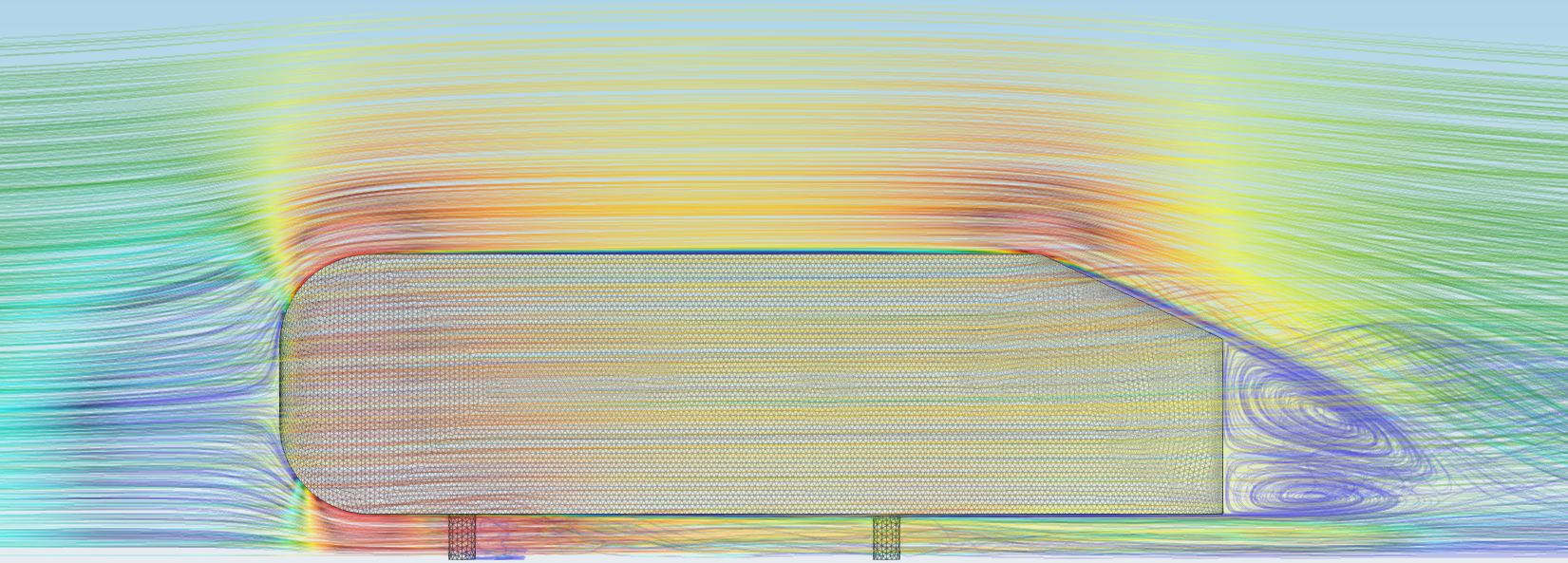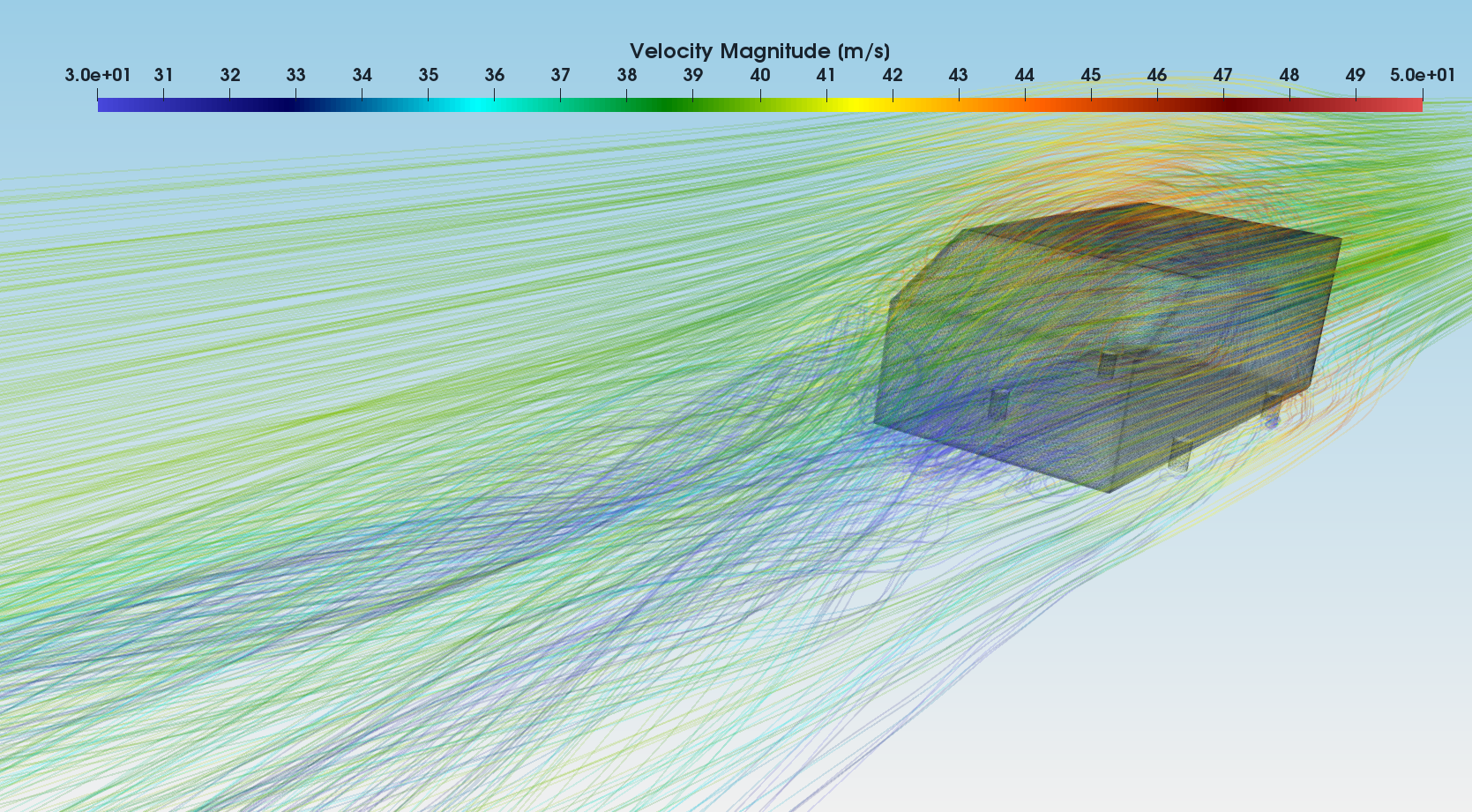
Ahmed Body CFD Simulation Benchmark
This study shows a complex CFD analysis and validation of external aerodynamics benchmark Ahmed body using simulation environment TCAE
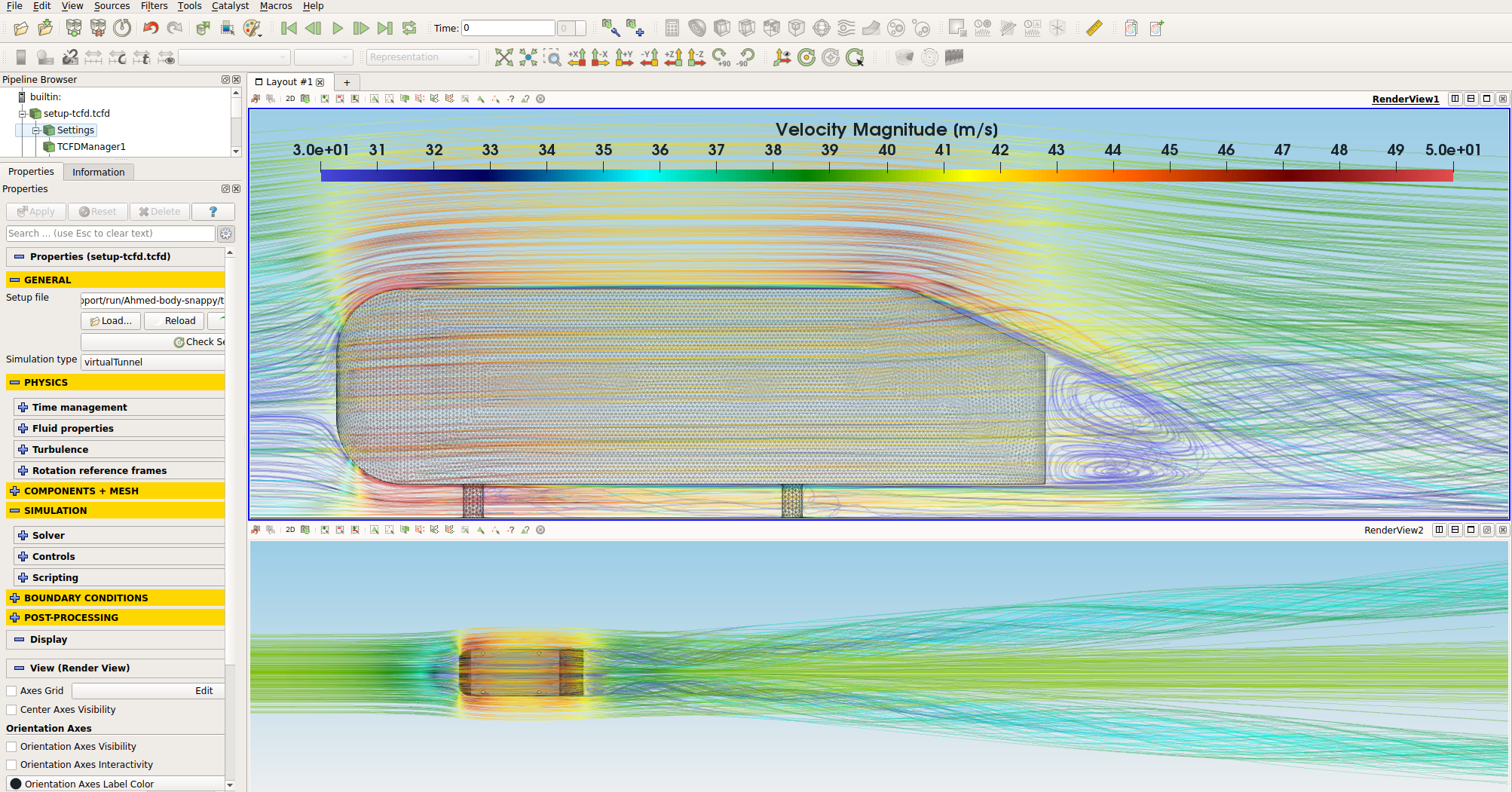
Ahmed Body TCFD Simulation Validation Benchmark
Ahmed Body Benchmark - Preprocessing
The original CAD model of the Ahmed body was in the STEP file format. Original STEP files are usually too complex for comprehensive CFD simulations, so certain preprocessing (cleaning) CAD work is generally required. While the original CAD model for this project was simplified and cleaned using Salome open-source software, any other standard CAD system can be used instead.
The principle is always the same: the surface model has to be created; all the tiny, irrelevant, and problematic model parts must be removed, and all the holes must be sealed up. This Ahmed body CAD model is reasonably simple. The surface model in the STL format is created as input for the meshing phase. This preprocessing phase of the workflow is extremely important because it determines the simulation potential and limits the CFD results.



Ahmed Body Benchmark - Mesh
The computational mesh was created in an automated workflow using snappyHexMesh application. A cartesian block mesh was used for the initial background mesh to mimic the virtual tunnel. The Ahmed body model itself is 1044mm long, 338mm high, and 389mm wide. The virtual tunnel is 5m high, 11m long, and 6m wide. Basic mesh cell size is a cube of 10mm edge. One Refinement box is included within the refinement level 5. The inflation layer of the mesh, at every wall, has 5 cells, of Expansion ratio 1.25 between cells. The mesh refinement levels can be easily changed, to obtain the coarser or finer mesh, to better handle the mesh size. In case of need, any other external mesh can be loaded directly in MSH, CGNS or OpenFOAM format.

TCFD Case Setup
TCFD, developed by company CFDSUPPORT, is a general hi-tech CFD software, designed for a wide range of industrial applications. It successfully merges the benefits of both open-source and commercial code. TCFD numerical solver is based on OpenFOAM. TCFD shows great performance at the external aerodynamics of various structures. TCFD is natively compiled for Windows and Linux operating systems. No need of any virtual systems. The engineering workflow is exactly the same on both systems. TCFD includes an automated meshing system. Based on snappyHexMesh. And also, the external meshes created in another software can be loaded. TCFD has strong postprocessing. Every simulation that is executed in TCFD, has its own HTML report with the results. Volume fields are visualized in ParaView. Integral results are saved in CSV files.
Input data
The surface model data in .stl file format together with physical inputs are loaded in TCFD. Other option would be loading an external mesh in OpenFOAM® mesh format, or loading an MSH mesh format (Fluent mesh format). This CFD methodology employs a multi component approach, which means the model is split into a certain number of regions. In TCFD each region can have its own mesh and individual meshes comunicate via interfaces.
Grapgical interface
All the case settings are set in a graphical intergace. The TCFD graphical interface is based on ParaView. Most of the users prefer to use a graphical interface for case setup and then decide for example to use the command line for cluster run. The workflow is very flexible and the command line vs GUI decision is always on the user.
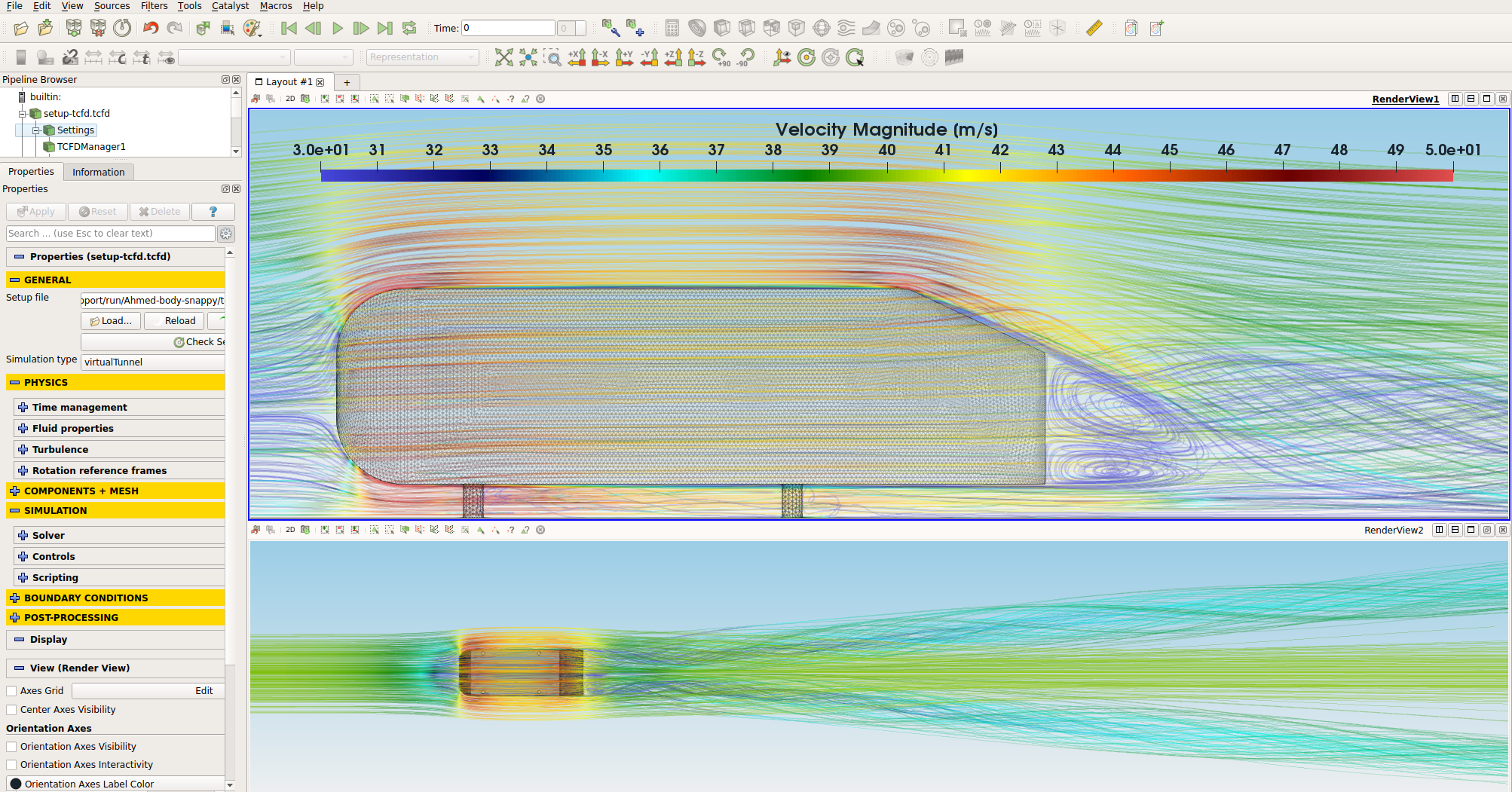
The component graph
Any project simulated in TCFD has its component graph. The component graph shows how the components are organized – the model topology. What is the inlet, the outlet and how the components are connected via interfaces.
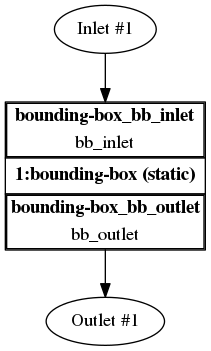
CFD Simulation Set-up
- Incompressible flow model
- Steady-state flow model
- Medium: Air
- Viscosity: ν = 1.5e-5 [m2/s]
- Turbulence Model: k-ω SST
- Mesh: snappyHexMesh
- Mesh Cells: 20,000,000
- CPU time (steady-state): 700 [core.hours]
For more details of CFD Simulation Set-up see TCFD Manual.
Running CFD Simulation
The simulation can be run on any number of parallel processors. Immediately after the simulation is started, the user can follow the progress of all the important quantities in a HTML report: forces acting on the building surface, flow rates, residuals, pressure and many others. These run-time functions give the user valuable information of the simulation convergence and also the availability to stop the simulation before its expected end.
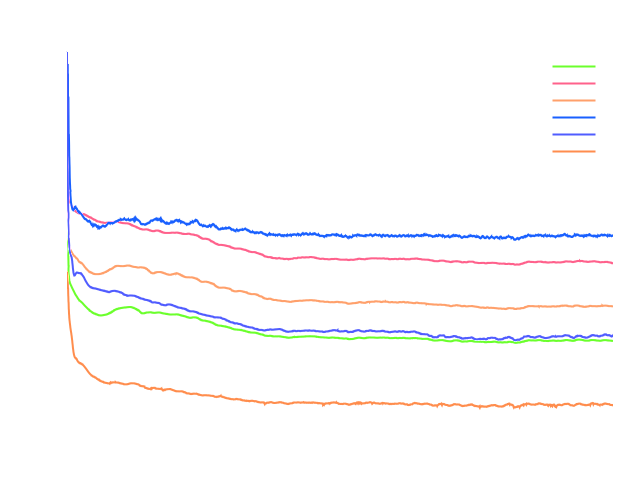
Every simulation performed in TCFD has its report in web responsive .html and pdf format: Ahmed Body benchmark – Results Report.
Results #1 - The Drag Coefficient
The Drag Coefficient is a very important total value (dimensionless quantity), which is a measure of the object’s resistance to the airflow. A major contribution to the drag of a vehicle stems from the pressure drag which is a consequence of flow separation. According to measurement in the wind tunnel [1], the drag coefficient of the Ahmed body, with the slant angle 25º, has the Drag Coefficient equal to 0.285, while simulation software TCFD predicts the Drag Coefficient to 0.2848. The difference between the simulation and measurement is so little that it below the drag coefficient image resolution.

Results #2 - Velocity Profiles
The Drag Coefficient is a very important total value (dimensionless quantity), which is a measure of the object’s resistance to the airflow. A major contribution to the drag of a vehicle stems from the pressure drag which is a consequence of flow separation. According to measurement in the wind tunnel [1], the drag coefficient of the Ahmed body, with the slant angle 25º, has the Drag Coefficient equal to 0.285, while simulation software TCFD predicts the Drag Coefficient to 0.2848. The difference between the simulation and measurement is so little that it is below the drag coefficient image resolution.

Results #3 - Velocity Field
Another important goal is the flow visualization on the plain located downstream in the wake, behind the Ahmed body. In the original paper from S.R.Ahmed [1], the authors suggest examining the cross-flow velocity distribution, at three downstream positions in the wake at positions (a), (b), and (c). Shown are the velocity distributions in the half of the symmetric transverse planes at xA/l =-0.077, -0.19 and -0.479. The cross-section boundary of the bubble is shown. Region of reversed flow is cross-hatched. The formation of the side vortex is clearly visible. It is also seen that its core is fed by the separation bubble. Velocity vectors in the cross-hatched region indicate the existence of an upper and lower region of reversed flow; the axis of the upper region is curved upwards in direction of the core of the side edge vortex.

Results #4 - Wake Structure
Another important goal of this study is examining the wake structure. In the original paper from S.R.Ahmed [1], the authors observed that the wake flow exhibits a triple deck system of horseshoe vortices. Strength, existence, and merging of these vortices depend upon the base slant angle. In a time-averaged sense, the regions of flow separation exhibit complex kinematic macro structures. Such structures in the wake, which is the major separated flow region of a vehicle flow field, determine the drag experienced by the body. The shear layer, coming off the slant side edge, rolls up into a longitudinal vortex, in a manner similar to that observed on the side edge of low aspect ratio wings. At the top and bottom edges of the flat vertical base, the shear layer rolls up as indicated, into two recirculatory flow regions A and B, situated one over another. As the flow over the slant surface is influenced by the vortex C coming off the side edge, the strength of vortex A is dependent upon the strength of vortex C. The flow observation described in [1] was clearly confirmed with the TCFDsimulation.

Conclusion
- The very complex CFD analysis of the Ahmed body aerodynamics, using TCFD, was performed successfully. It has been shown, that the TCFD simulation provides very good agreement with the measurement data, in terms of total integral quantities (Drag Coefficient), 1D quantities (Velocity profiles), 2D effects (Velocity planes), and 3D effects (Wake structure).
- According to measurement in the wind tunnel [1], the drag coefficient of the Ahmed body, with the slant angle 25º, has the Drag Coefficient equal to 0.285, while simulation software TCFD predicts the Drag Coefficient to 0.2848. The difference between the simulation and measurement is so little that it below the measurement drag coefficient image resolution [1]. The numerical difference of the Drag Coefficient of the Ahmed body between measurement and the TCFD simulation is less than 0.1% (while the authors of the measurement estimate the measurement itself has an error about 1%, [1] ). In the CFD simulation, the velocity profiles are extremely sensitive to mesh density at the wall.
- Overall the velocity profiles predicted by the simulation show good agreement with the measurement. Visual characteristics (cross-flow velocity distribution at three downstream planes, and the triple-deck system of horseshoe vortices in the time-averaged wake) of the flow, show very good agreement between the measurement and TCFD simulation.
- All the data are freely available.
- Potential questions will be answered on request at info@cfdsupport.com.
References
[1] S.R. Ahmed, G. Ramm, Some Salient Features of the Time-Averaged Ground Vehicle Wake, SAE-Paper 840300, 1984
[2] H. Lienhart, C. Stoots, S. Becker, Flow and Turbulence Structures in the Wake of a Simplified Car Model (Ahmed Model), DGLR Fach Symp. der AG STAB, Stuttgart University, 15-17 Nov. 2000
[3] H. Lienhart, S. Becker, Flow and Turbulence Structure in the Wake of a Simplified Car Model, SAE 2003 World Congress, SAE Paper 2003-01-0656, Detroit, Michigan, USA, 2003
[4] C. Hinterberger, M. García-Villalba, W. Rodi, Large Eddy Simulation of flow around the Ahmed body. In “Lecture Notes in Applied and Computational Mechanics / The Aerodynamics of Heavy Vehicles: Trucks, Buses, and Trains”, R. McCallen, F. Browand, J. Ross (Eds.), Springer Verlag, ISBN: 3-540-22088-7, 2004
Download TCAE Tutorial - Ahmed Body Benchmark
File name: Ahmed-body-snappy-TCAE-Tutorial-21.09.zip
File size: 3 MB
CFD, TCAE, TMESH, TCFD, SIMULATION, INCOMPRESSIBLE FLOW, RANS, AIR FLOW, STEADY-STATE, AUTOMATION, WORKFLOW, SNAPPYHEXMESH, 1 COMPONENT, EXTERNAL FLOW, snappyHexMesh, U=40 m/s

